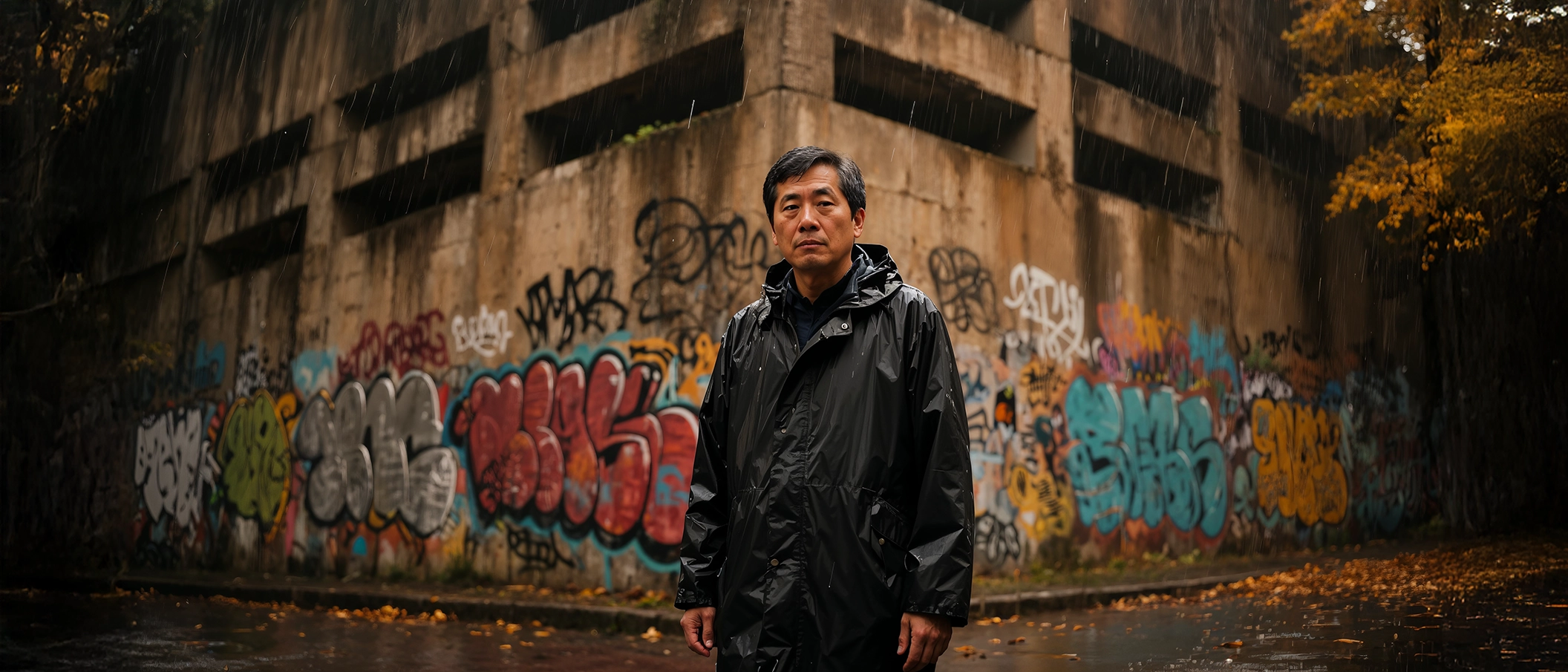Google Veo 3
Try Google veo 3 now in Freepik.
Introduction
Google Veo 3 is one of the most advanced AI models for video generation and is now fully integrated into the Freepik AI Suite. This model allows users to turn simple text prompts into highly realistic videos with synchronized audio, including voices, ambient sounds, and music, without additional editing steps. In this guide, you will learn what makes Veo 3 different, how it works inside Freepik, how to generate videos step by step, and you will see real examples that show its full creative potential.
What is Google Veo 3?
Google Veo 3 is a multimodal AI model that transforms text and images into high-quality video. Announced at the Google I/O 2025 event, it combines advanced prompt understanding, visual consistency, and native audio generation to create complete video content directly from user input. Its ability to generate synchronized voices, ambient sounds, and music eliminates the need for separate audio production. Veo 3 offers greater creative control and allows users to build complex scenes more efficiently. The model delivers smoother camera movements, coherent environments, and a stable visual style even when working from simple prompts.
Key features of Veo 3: strengths and limitations
Google Veo 3 is a cinematic AI video model designed to generate visually rich and narratively coherent videos directly from text or image prompts.
One of its standout capabilities is native audio generation. Veo 3 can generate spoken dialogue, sound effects, and music that are synchronized precisely to the visual timeline. Its lip-sync system uses phoneme-level control to animate faces naturally and match speech rhythm, emotion, and facial gestures. The model also gives users stylistic control: prompts can include instructions for camera angles, lighting, genre, and more.
Veo 3 is also multimodal. It supports both image and text inputs, letting users guide the composition, framing, and visual tone. Thanks to its internal memory and temporal coherence system, it maintains visual consistency across shots and scene transitions. Users can include cinematic movements, like zooms, pans, or handheld camera effects, just by describing them in the prompt.
However, Veo 3 has some limitations. While it's strong in most narrative and commercial use cases, it can struggle with highly stylized or abstract visuals. Videos generated with this model are currently limited to 8 seconds, although this is less of a constraint now that you can use the Extend Video tool to increase duration. At the moment, extended videos are generated without audio. Audio sync may be imperfect in fast-paced scenes, and voice or sound layer control is still limited.
What makes Veo 3 different?
Google Veo 3 combines advanced video generation with built-in audio, strong prompt fidelity, and support for both text and image input. These features work together to produce cinematic results with minimal manual intervention:
- Full video and audio generation: Unlike other models that require separate steps for sound, Veo 3 generates synchronized audio together with the video. This means users can get fully produced clips without handling sound design separately.
- Prompt fidelity and cinematic control: Veo 3 interprets prompts with high precision, generating smooth camera movement, stable scene composition, and consistent visual style. This makes it easier to create narrative-driven content from simple input, giving creators more direct control over how scenes look and feel.
- Multimodal input (text + image): Veo 3 allows you to use an image alongside your text prompt to influence composition, style, or visual references. This offers more creative flexibility, especially when building scenes that need to match specific layouts, branding, or references.
Pros and cons
Here’s a quick summary of its main advantages and current limitations:
| Strengths | Limitations |
|---|---|
| ✅ Native audio generation from text | ❌ High credit cost per generation |
| ✅ Lip-synced dialogue and character animation | ❌ Limited control over individual audio layers |
| ✅ Text and image prompts supported | ❌ Limited support for abstract or non-naturalistic styles |
| ✅ Stylistic and cinematic prompt control | ❌ Occasional sync or consistency issues |
| ✅ Realistic motion and lighting | ❌ Requires high compute power and longer generation time |
| ✅ Temporal memory for scene coherence |
How to access Google Veo 3?
How to use Google Veo 3 inside Freepik
Follow these steps to generate videos with Google Veo 3 inside Freepik:
Access the AI Video Generator.
Select Google Veo 3 as your model.
Write your prompt.
Make sure the “Sound effect” toggle is turned on so the video includes audio.
In advanced settings, add negative prompts if needed and set a custom seed.
Click Generate.
Tips to write better prompts for Google Veo 3
Writing a strong prompt is key to getting cinematic, coherent results. Here are a few guidelines:
- Be specific with your scene: Include details like setting, characters, mood, time of day, atmosphere, and action. <em>Example:</em> "A medieval castle at sunset, two knights walking, cinematic camera movement, warm light."

Prompt: A medieval castle at sunset, two knights walking, cinematic camera movement, warm light
- Use cinematic language: Terms like *close-up*, *wide shot*, *slow motion*, *dynamic camera*, or *panning shot* help guide Veo 3’s camera behavior.

Prompt: Close-up of tan skin with orange marigolds growing from it, hyper-realistic and dreamy, bokeh effect, sunset lighting
- Mention the mood or style: Add keywords such as *dramatic*, *surreal*, *fantasy*, *action*, or *documentary-style* to help define the tone.

Prompt: A silver sedan mid-air over a collapsing wooden bridge during a chase, swirling dust, subtle lens flare, motion blur, cinematic action shot, rainy night
- Describe character actions: Simple actions like *walking*, *looking surprised*, or *holding an object* often make the scene feel more natural.

Prompt: A person holding a single flower made of chrome, centered framing, deep shadows, surreal minimalist styling
- Avoid overcomplicating: Focus on one clear scene or action. Overloaded prompts may generate conflicting visuals.

Prompt: A person standing in front of a giant brutalist wall, centered framing, neutral tones, no expression
Real examples of videos created with Google Veo 3
Here are some examples of videos generated using Google Veo 3:
A real unicorn in the woods?
This clip shows how Veo 3 interprets abstract prompts and transforms them into coherent, cinematic scenes. The movement feels natural, the environment is visually consistent, and the atmosphere matches the tone of the prompt, proving the model’s ability to handle fantasy settings.
This pirate ship runs on AI
This clip demonstrates how Google Veo 3 can generate a cohesive, animated environment with fluid camera movement and stable composition. The sea, ship, and lighting all respond to the prompt in a way that feels grounded and cinematic.
Knights, dragons, and prompt-based drama
The model correctly places figures in the frame, animates them with logical movement, and adds spatial coherence to fantasy elements like dragons and battle-ready characters. This is a great example of how Veo 3 combines scene action with prompt-based control.
Nothing is normal on this farm
This video illustrates Google Veo 3's ability to manage surreal or comedic scenes while maintaining visual coherence. The odd, unexpected elements are introduced without breaking the tone of the original setting, showing how the model balances consistency with creativity.
The biggest surprise wasn’t Bigfoot
Here, Google Veo 3 generates a layered scene full of tension and visual storytelling. The model introduces characters and movement at just the right pace, preserving a filmic rhythm. It’s a great example of how the tool handles narrative flow and surprise elements while keeping shots well-framed and detailed.
Reality is losing 0–2
This video blends sports visuals with creative effects, capturing fast movement and surreal transitions. Google Veo 3 balances ambient tone, motion dynamics, and visual clarity, showing how it adapts well to high-energy prompts and stylized storytelling.
View the step-by-step prompts behind each Veo 3 video demos.
How much does Veo 3 cost?
Generating videos with Google Veo 3 uses AI credits inside the Freepik AI Suite. The current cost is:
| Model | Cost (4 seconds) |
|---|---|
| Google Veo 3 (no sound) | 2,000 credits |
| Google Veo 3 (with sound) | 4,000 credits |
| Google Veo 3 Fast (no sound) | 1,040 credits |
| Google Veo 3 Fast (with sound) | 1,520 credits |
If you need to generate a longer video, you can use the Extend Video tool. Keep in mind that extended clips currently don’t include audio.
Google Veo 3 vs. other AI video models
Not all AI video models are built the same. While some specialize in visual stylization or motion realism, others aim for full-scene generation with audio and direction. Here’s how Google Veo 3 compares with other widely used models like Kling 2.1, Runway Gen-4, and MiniMax Hailuo 02, based on their core features and strengths.
Feature Comparison
| Feature | Google Veo 3 | Google Veo 3 Fast | Kling 2.1 | Runway Gen-4 | MiniMax Hailuo 02 | Seedance 1.0 |
|---|---|---|---|---|---|---|
| Visual quality | 720p | 720p | 1080p/1080p | 720p | 768p/1080p | 480p/720p/1080p |
| Video length | 4s-8s | 8s | 5s-8s | 5s-8s | 6s | 5s-10s |
| Audio generation | Full: dialogue, ambiance, SFX | Full: dialogue, ambiance, SFX | No audio | No audio | No audio | No audio |
| Lip-sync | Native, with facial animation | Native, with facial animation | Not supported | Not supported | Not supported | Not supported |
| Prompt inputs | Text + start video/image | Text + start video/image | Text + start video/image | Text + video/image | Text + video/image | Text + video/image |
| Camera movement | Prompt-controlled | Prompt-controlled | Predefined or inferred | Stylized transitions | User can apply different effects: pan left/right, push in, tilt up… | Prompt-controlled |
Conclusion
Google Veo 3 is one of the most advanced AI video models available today. It generates high-quality video and audio from simple prompts, combining realistic motion, synchronized sound, and scene consistency. You can use it to create content for marketing, education, short-form storytelling, and more.
Ready to explore Veo 3? Try it now in Freepik AI Video Generator.
Can't find an answer to your question?